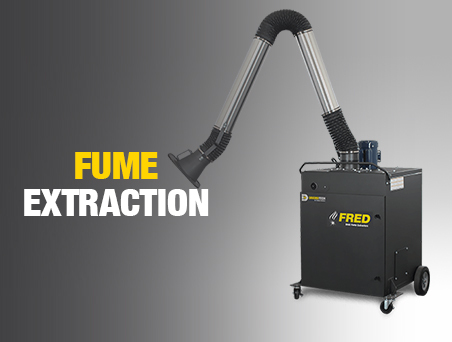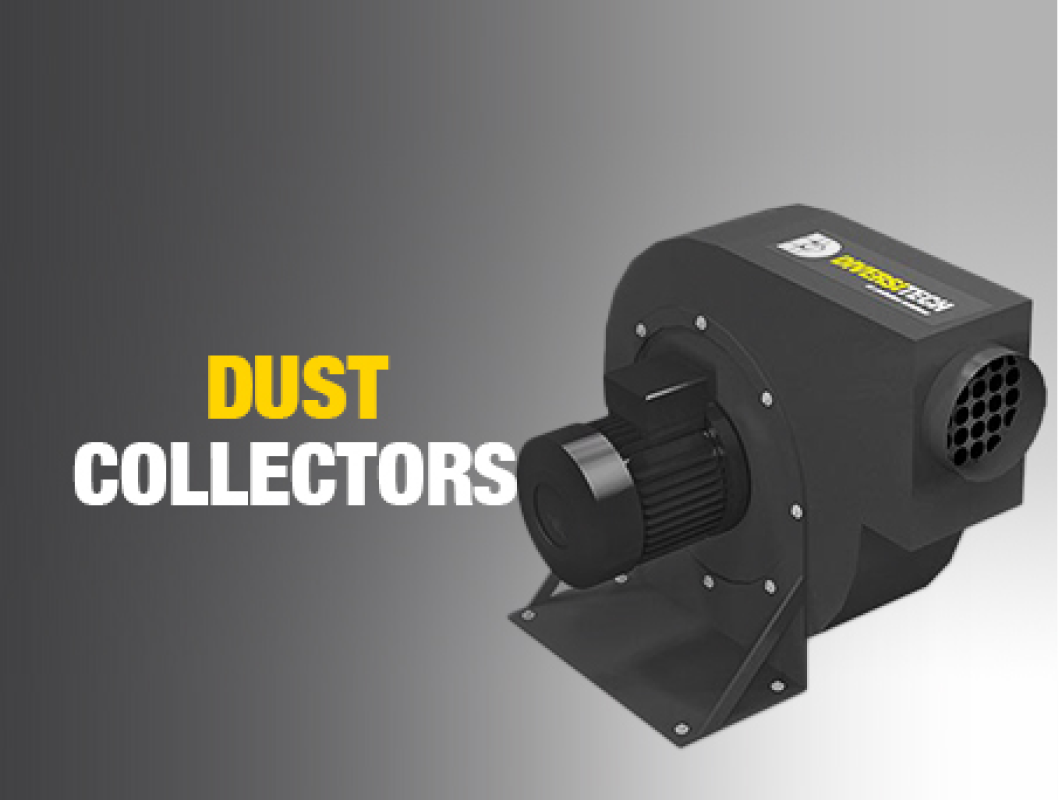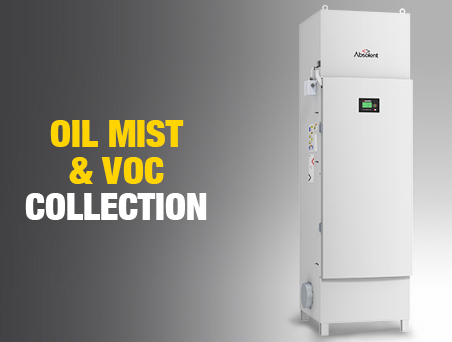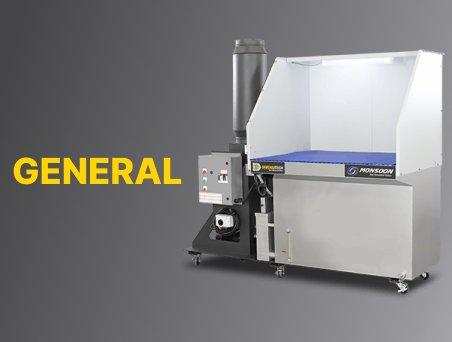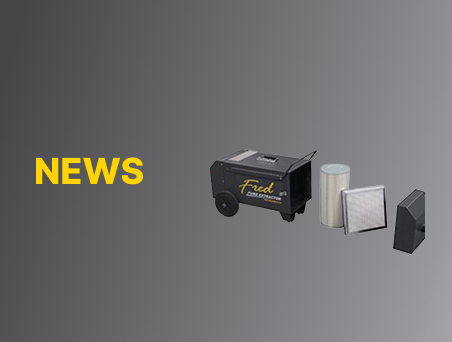There is one dust collection apparatus that is often overlooked for less expensive or older technologies that, in reality, boasts a wide range of use-cases. In fact, the applications for this device are so varied, that it warranted an article of its own. With such wide applications possible for these tools, they have the potential to impact the health and safety of workers in practically all industries across manufacturing, food production, metalworking, wood working, stone working, painting and finishing, pharmaceuticals, and more.
As employees and employers are becoming more acutely aware of the hazards of airborne particulate matter, fumes, and oil mists in the workplace, some illnesses that were considered rare only 20 years ago have skyrocketed in cases, primarily due to prolonged exposure to some kind of airborne particulate matter. COPD, silicosis, and popcorn lung are all examples of these impending health issues that have only recently surfaced in the vernacular. While many of these ailments have been known in medicine for multiple decades in some cases, very few of them have treatments that are near anywhere 100% effective in curing the damage caused by the lung tissues scarring.
These profoundly impactful particulate matter collectors, as you may have guessed, are collectively called “downdraft tables.” They are essentially specialized workstations equipped with built-in ventilation systems designed to capture and control dust, fumes, and other airborne contaminants. Here we will dive into some of the extensive range of uses for downdraft tables, showcasing their importance across manufacturing and beyond.
Downdraft Tables in Metalworking and Welding
When working with metals, whether it be smelting, welding, molding, or in processes like electroplating and anodizing, there is a significantly high probability that any fumes generated will be hazardous to human health, and any fine particulate matter that becomes airborne is a constant concern. Downdraft tables prove invaluable by capturing and filtering these airborne contaminants at their source. The tables are equipped with powerful ventilation systems, filters, and strategically placed exhaust vents, creating a downward airflow that directs contaminants away from the worker’s breathing zone.
These tables are also capable of handling high-temperature applications, such as welding, which makes them absolutely indispensable in creating safer working environments.
Table of Contents:
Woodworking, Grinding and Sanding on Downdraft Tables
Woodworking operations often involve various processes that release wood dust and other potentially harmful particles into the air. Downdraft tables, designed with large work surfaces and effective collection systems are ideal for woodworking applications. The downward airflow ensures the dust is immediately captured and pulled away, preventing it from dispersing into the surrounding air.
In a similar vein, precision grinding and sanding operations also come with the challenge of airborne particulate matter. When working with manufactured stone and granite, these concerns are of particular pertinence, as was covered in our previous article outlining OSHA’s new silica rules, and this article from the LA Times that details the issues some California countertop installation workers are currently facing. When dealing with these processes, it is often necessary to utilize multi-stage filtration to catch particles of various sizes that can be created. By setting up a graduated filtration system, these products can ensure a more thorough cleaning of the exhausted air. There is an additional benefit for precision work when utilizing a downdraft table: significantly improved visibility of the work by the workers, due to a lack of particulate “fog” that can arise in non-ventilated situations. This leads to better quality precision work, as well as a reduced number of accidents and injuries in the workplace, further solidifying downdraft tables as a given when considering workplace health and safety.
Fumes, VOCs, Oil Mists, and Liquid Particulates
Often in industries utilizing paints, varnishes, lacquers, and certain epoxy finishes, downdraft tables play an essential role in maintaining air quality and protecting workers. These tables are usually designed to capture overspray and fumes generated during painting, preventing them from spreading. This ultimately results in not only a cleaner, healthier workplace, but oftentimes a higher quality finish on products painted on these tables, due to preventing any contamination and drying finishes more quickly due to the increased airflow across the finished surfaces. So, not only can downdraft tables be essential for the health of employees, but they are also capable of increasing overall product quality, perceived value, and efficiency.
Increase your efficiency, product quality, OSHA compliance, and overall employee health with a Diversitech-Air downdraft table today. Browse our selection or get in touch for more information.
Laboratory and Pharmaceutical Settings
Beyond manufacturing applications, downdraft tables find uses in the laboratory and pharmaceutical settings, where precision, cleanliness, and remaining contamination free are paramount. These tables provide controlled environments for tasks such as weighing, measuring, and handling volatile or sensitive materials. The downdraft airflow helps contain and filter any particulates and fumes, ensuring the integrity of experiments and reactions.
When there are strict quality standards in place, as in pharmaceutical manufacturing, downdraft tables contribute to maintaining sterility and reaction environments that are contamination-free. Workers can perform their tasks then with confidence, secure in their knowledge that contaminants are effectively managed.
Food Processing, Packaging and Downdrafts
Beyond Pharmaceuticals, the food industry is another where maintaining hygiene is critical. Downdraft tables find application in food processing and packaging facilities where dust, crumbs, and other contaminants can pose a threat to food safety, and employee health. These tables, constructed with materials suitable for food handling (typically food-grade platinum cured silicone) provide a clean and controlled workspace for food processing workers.
By capturing and filtering airborne food particles, smoke, and oils, they are prevented from settling on surfaces or contaminating other food products, downdraft tables contribute to compliance with food safety standards and regulations. Their downward airflow also minimizes the risk of cross-contamination and allergen contamination, ensuring the highest standards of hygiene are maintained.
Downdraft Tables, FTW
Downdraft tables stand as versatile solutions across this broad spectrum of industries, and many more, addressing common challenges associated with any airborne contaminants. From metalworking and woodworking to laboratory and food processing settings, these tables play a much-needed role in maintaining a healthy and hygienic workplace. If you’re ready to turn the tables on particulates and fumes, contact the team at Diversitech-Air for a consultation and recommendations today, to help you get airborne contaminants and particulates, off the table for good.
- Topics:downdraft tables, dust collection
Related Products
Mini DD

Designed for light-medium duty applications, our Mini DD Downdraft Table is economical, portable and easy-to-use.
VIEW PRODUCT DETAILSDD 2' X 4'
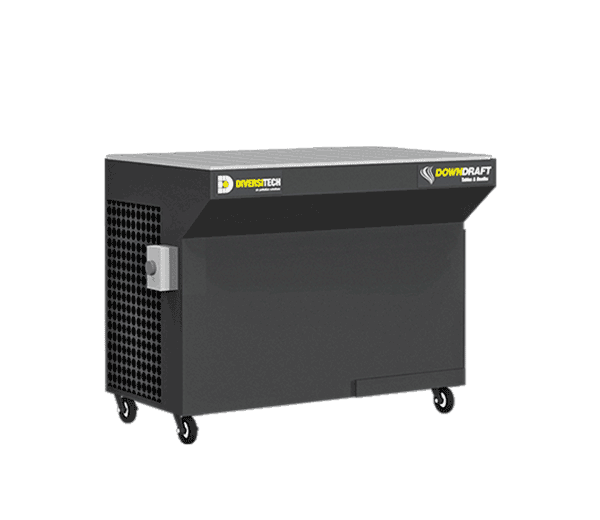
Designed for industrial duty applications, the DD 2' X 4' Downdraft Table is portable, reliable and easy-to-use. Fumes, smoke and dust are captured right at the source so indoor air quality remains uncompromised.
VIEW PRODUCT DETAILSDD 3' X 6'
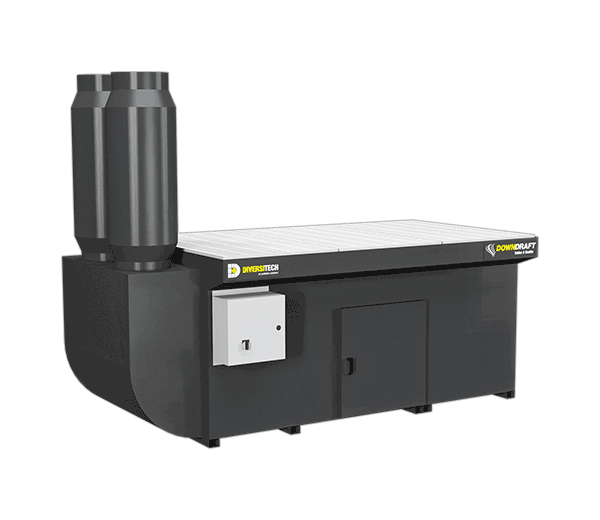
The trusted choice of North America’s largest manufacturers, Diversitech’s DD series of industrial downdraft tables are built to withstand the most demanding applications
VIEW PRODUCT DETAILSDD 5' X 10'
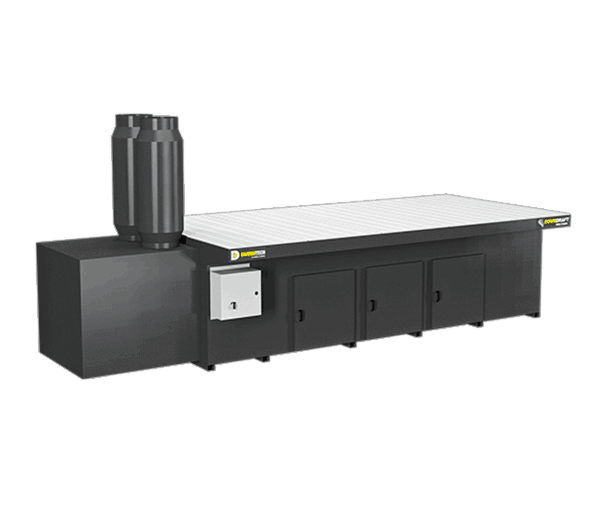
We built our DD series of industrial downdraft tables to handle even the most demanding applications. Capturing smoke, fumes and dust right as they’re produced
VIEW PRODUCT DETAILS
